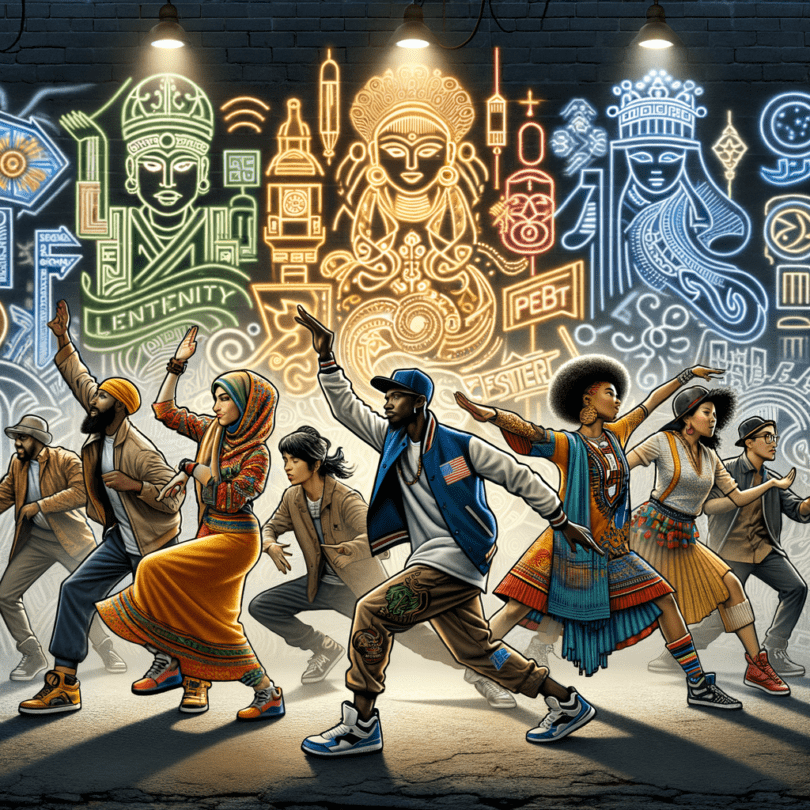Not long after “Rapper’s Delight” hit the airwaves in the fall of 1979, remixes and interpretations of this first big rap hit started popping up all over the globe. Brazil gave us two Portuguese versions named “Bons Tempos” and “Melô Do Tagarela.” Jamaica brought forward a faithful recreation, but also slowed it down to create a reggae twist called “Hotter Reggae Music.” The Netherlands, Venezuela, and Germany offered their own local takes with “Hallo, Hallo, Hallo,” “La Cotorra Criolla,” and “Rapper’s Deutsch,” respectively.
A short time later, traces of the song were being reimagined in unique ways across the world. By 1981, we had Japanese artists Yellow Magic Orchestra with “Rap Phenomena,” Nigeria’s Dizzy K. Falola dropping “Saturday Night Raps” in 1982, and a quirky French duo, Chagrin d’amour, with “Chacun fait (c’qui lui plait).” Even Soviet-era Russia got in on the action with Chas Pik’s “Rap” in 1984.
This rapid spread of “Rapper’s Delight” set a cornerstone in hip-hop history, as it marked the birth of a global rap culture that included more than just the music—deejaying, breakdancing, and graffiti are part of it all. By 1984, France had DJ Sidney hosting “H.I.P.H.O.P,” the first national TV show all about rap, paving a trail that even “Yo! MTV Raps” in the U.S. followed a few years later. France also became a hotspot for rap outside the U.S., giving the world MC Solaar in the 1990s, a star who hit platinum and toured globally.
By the 2000s, “global hip-hop” had become a common phrase in both commerce and academia. Entirely new genres, like London’s grime, sprang up, nourished in part by hip-hop’s flair.
Yet, there’s a sticky paradox in hip-hop’s worldwide rise. While it undeniably springs from African American urban culture, it’s built on the idea of expressing one’s own unique story. So when it travels, how do you balance these influences? This is where the tricky question of authenticity gets really interesting.
From my perspective, authenticity in hip-hop could lie anywhere on a spectrum. On one side, you’ve got those who soak up the Black American style, sometimes to the edge of copying it. On the other side, you have artists who inventively weave their traditional music and language into hip-hop, making something entirely fresh.
Halifu Osumare’s idea of “connective marginalities” helps us understand this. It’s about social connections that link Black expressive culture with similar energies in other places. Whether it’s rooted in diaspora or linked through struggles like class or youth marginalization, almost anyone can find a chord that resonates with hip-hop. However, Yvonne Bynoe argues that while rap music has traveled far, hip-hop culture itself cannot fully detach from its origins—it’s too deep in the Black American experience to speak universally.
Michael Wanguhu’s 2007 documentary “Hip Hop Colony” on Kenya tackles these nuances. On one hand, hip-hop seems like a new colonial force. But the film flips the narrative, showing how Kenyans create their own version of hip-hop, turning it into a vessel for cultural introspection and change.
In different places, this music becomes a mirror reflecting local traditions. Senegalese rapper Faada Freddy and Australian aboriginal rapper Wire MC both recognize old forms of rhyming and storytelling in hip-hop, seeing it as part of their cultural narrative. Even Frank Waln, a Native American rapper, feels his people’s tales flow seamlessly into this modern art form.
Artists around the world are doing the same, grounding their work in local traditions while expressing global ideas—like Japan’s Hime, Ghana’s Obrafour, or Somali Canadian K’Naan, all weaving rich cultural threads into the fabric of hip-hop.
It’s fascinating to see how the core essence of hip-hop holds tight its African American roots, though transformed by the diverse human experience globally. Chinese rapper Vava, for instance, sees hip-hop as a way to voice rebellion, much like American hip-hop expresses historical struggle.
Ultimately, it seems hip-hop’s authenticity doesn’t dilute as it spans borders. Instead, it spreads a universal form of expression—one that lets us all speak honestly about our worlds, and in listening, understand both ours and others’ experiences just a little better. Jay-Z captures it nicely in his memoir, underscoring that rap may emerge from distinct experiences, but what it taps into are universally human stories.

